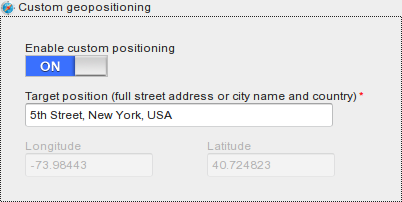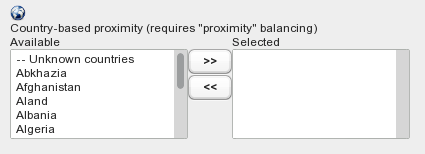A proximity balancing DNS dynamically routes your users and customers to the closest or most suitable available datacenter from a geographical perspective so that application load can be spread across your infrastructure and network response time is kept to a minimum.
GSLB.me flexible geographical balancing can determine the best location to serve content for your users based on the distance between clients and servers. edns-client-subnet DNS extension is used for granular and accurate geolocalization. This is crucial to achieve a high accuracy DNS balancing.
Geographical Proximity
Geographical proximity balancing handles DNS clients requests by returning the IP address(es) of geographically close datacenters and servers, this is particularly effective for latency-sensitive applications (webservices, online gaming, etc) and in all situations where users must be sent to different datacenters based on their physical position.

Datacenters and servers are automatically geo-positioned using GSLB.me geolocation database enabling fast rollout of your geographically-balanced services. For additional flexibility you can override the built-in geolocation database and enable custom geopositioning to manually define where your servers, datacenters and applications are based on criteria such as continent, region, country, city and street address.

Country-based proximity balancing
GSLB.me provides a powerful country-based proximity balancing feature that allows you to send traffic from selected countries to specific servers. Customers and clients originating from different geographical areas or countries can be selectively routed to the best servers in order to maximize speed, availability and to deliver geographically-aware services, applications and contents.
In addition to proximity balancing, GSLB.me also supports a flexible georouting algorithm that can be used to build sophisticated DNS “routing tables” based on clients countries and/or geographical regions.

